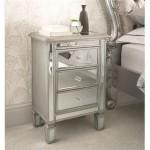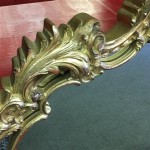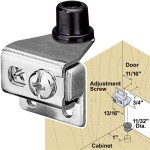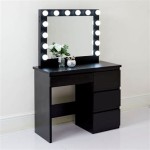How to Glue a Mirror to a Wall
Attaching a mirror to a wall using adhesive offers a sleek, modern alternative to traditional hanging methods. This approach eliminates visible hardware and provides a clean, flush finish. However, proper preparation and execution are crucial for success. This guide outlines the necessary steps to safely and effectively glue a mirror to a wall.
Assessing the Situation
Before beginning, several factors must be considered to ensure the chosen adhesive and application method are appropriate. These include: 1. Mirror weight and size: Larger, heavier mirrors require stronger adhesives and potentially additional support. 2. Wall material: Different wall surfaces (e.g., drywall, plaster, tile) demand specific adhesive types. 3. Environmental conditions: High humidity or temperature fluctuations can affect adhesive performance. 4. Mirror backing: Some mirrors have pre-applied backing that may not be compatible with all adhesives. 5. Location: Consider the mirror's intended use and positioning to determine the necessary strength and durability of the bond.
Gathering the Necessary Materials
Having all the required materials readily available simplifies the process and ensures a smooth workflow. The essential items include: 1. Mirror adhesive: Select a high-quality adhesive specifically designed for mirrors and compatible with both the mirror backing and the wall material. 2. Mirror mastic: Consider using mirror mastic for larger or heavier mirrors. 3. Cleaning supplies: A suitable cleaner for both the wall and mirror surface (e.g., isopropyl alcohol) is essential. 4. Measuring tape: Accurate measurements are crucial for proper placement. 5. Level: A level ensures the mirror hangs straight. 6. Pencil: For marking the desired mirror position. 7. Safety equipment: Gloves and eye protection are recommended when working with adhesives. 8. Support system (optional): Temporary supports like painter's tape or shims can be helpful for larger mirrors.
Preparing the Wall Surface
A clean and properly prepared wall surface is vital for optimal adhesion. The following steps will ensure the adhesive bonds effectively: 1. Clean the wall: Thoroughly clean the wall surface with a suitable cleaner to remove dust, grease, and other debris. Allow the surface to dry completely. 2. Repair any damage: Fill any holes or imperfections in the wall with spackle or patching compound. Sand smooth and allow to dry before proceeding. 3. Prime the wall (if necessary): For porous surfaces like drywall, applying a primer can improve adhesion. Allow the primer to dry completely according to the manufacturer's instructions.
Preparing the Mirror
Proper mirror preparation ensures a secure and lasting bond with the wall. The following steps are essential: 1. Clean the mirror backing: Clean the back of the mirror with isopropyl alcohol to remove any dust or contaminants. Allow it to dry completely. 2. Inspect the backing: Check for any existing adhesive residue or protective film that may need to be removed.
Applying the Adhesive
Accurate and even adhesive application is critical for proper bonding and weight distribution. Follow these steps for best results: 1. Follow manufacturer's instructions: Adhere strictly to the manufacturer's instructions for the specific adhesive being used. 2. Apply adhesive in beads or dots: Apply the adhesive to the back of the mirror in evenly spaced beads or dots, ensuring full coverage while avoiding excessive buildup near the edges. 3. Consider weight distribution: For heavier mirrors, adjust the adhesive pattern to provide additional support in the center or along critical points. Use a mirror mastic in a zig-zag pattern for heavier mirrors.
Mounting the Mirror
Careful and precise mounting ensures the mirror is securely attached and positioned correctly. Follow these crucial steps: 1. Position the mirror: Carefully position the mirror on the wall, aligning it with the pre-marked location. 2. Apply even pressure: Press the mirror firmly against the wall, ensuring even contact with the adhesive. 3. Use a level: Check the mirror's position with a level to ensure it hangs straight, both horizontally and vertically. 4. Provide temporary support: For larger or heavier mirrors, use temporary supports (e.g., painter's tape, shims) to hold the mirror in place while the adhesive cures.
Curing and Finishing
Allowing adequate curing time is essential for achieving maximum bond strength. Following these steps will ensure a secure and lasting installation: 1. Allow the adhesive to cure: Allow the adhesive to cure completely according to the manufacturer's instructions. This typically takes 24 to 72 hours. 2. Remove temporary supports: Once the adhesive is fully cured, carefully remove any temporary supports. 3. Clean the mirror surface: Clean the mirror surface with a glass cleaner to remove any fingerprints or smudges.

How To Glue A Heavy Mirror The Wall Mom Blog Society

How To Use Mirror Adhesive Silicone

How To Frame A Mirror With Clips Glue The Wall
What Is The Best To Use Glue Mirrors A Wall Quora

How To Hang A Mirror With No Slip Adhesive

How To Remove A Mirror Glued The Wall Forbes Home

How To Hang A Mirror On Wall Without Nails

How To Safely And Easily Remove A Large Bathroom Builder Mirror From The Wall Site Title

How To Remove A Wall Mirror 11 Steps With Pictures Wikihow

How To Remove A Wall Mirror 11 Steps With Pictures Wikihow








